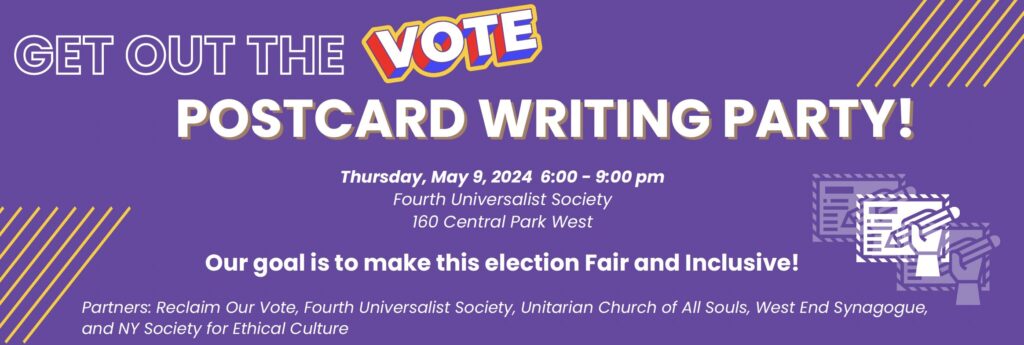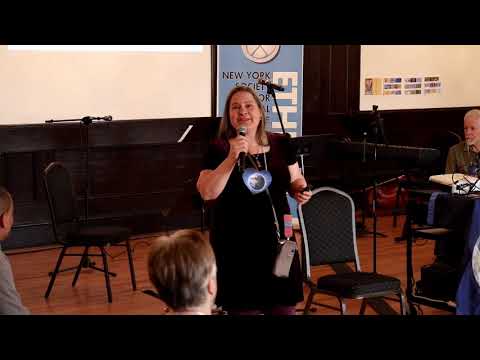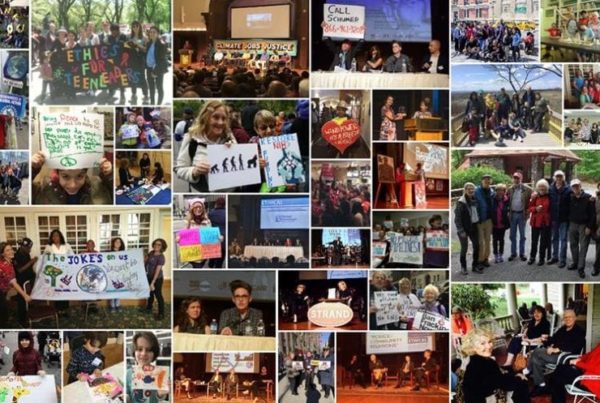
The latest Ethical Outlook Newsletter is online! Read below to see what the Society and our members have been doing to stay connected while apart.
Contents
From the Leader’s Desk | In Solidarity | Ask the Members | Local Heroes |About Our Programs | At Home | For the Kids (Parents, Too) | Young Ethical Explorers (YEE) | Sharing & Caring | AEU | Our Ethical Family

The Day the Earth Stood Still
By Leader Dr. Richard Koral
In the classic 1951 science fiction film “The Day the Earth Stood Still,” a super advanced and powerful alien visits Earth and scares the entire global population into working together cooperatively. The film came out just as the Cold War was getting frosty and the carnage of two World Wars remained fresh wounds on the public psyche. Indeed, what could get humans to ever stop fighting each other? Reason couldn’t succeed, nor could appeals to conscience. But apparently a demonstration of overwhelming power by a common adversary could do it. The alien stopped all the electricity in the world so that nothing could function for a brief period of time. That fright finally got people’s attention.
As the Covid-19 pandemic has passed the stunning toll of 100,000 victims in the US alone and over 350,000 worldwide, it looks as if humanity is facing a common enemy if ever there was one. If anything, this should be the occasion to step up cooperation in order to meet such a global threat. So far, the response has been mixed. On the one hand, there are joint efforts being conducted worldwide to find a vaccine and a cure. But there are other forms of cooperation that this challenge should inspire and encourage us to adopt. Whether we will step up to that challenge is an open question.
The lockdowns have slowed economic activity the world over and societies are in fear of economic collapse. But the impact on the environment has incidentally offered everyone a demonstration of the potential benefits of a more balanced industrial economy. We have seen a huge reduction in smog and pollution the world over. Skies are clearing up, bringing visibility and breathability that people haven’t enjoyed in living memory. Rivers are running cleaner.
In normal times, we could expect a rise in crime when stores are closed and streets are empty. In times of disaster, the police will anticipate looters and close off whole regions. Paradoxically, though, crime came way down in today’s pandemic era. There are double-digit drops in major crimes such as murder, rape, burglary, and drug-dealing. This happened in a time when crime rates were already as low as ever recorded.
There are fewer examples of people using the pandemic to exacerbate division and hostility. The Disparager in Chief and his followers have been the most visible exceptions. A crisis offers a president an opportunity to rally the population and lead a national, and indeed an international, effort to overcome adversity. It is unfortunate that our president has not been able to summon the vision or character to be that kind of leader.
There are lessons to be learned from this experience. We are seeing how environmental degradation can be reversed with a lighter industrial footprint. We see that we can deter many people from anti-social behavior by enlisting them in important social tasks and community engagement. But we also have seen how structural inequality of wealth and income left so many people of color more affected by the virus and more vulnerable to economic disruption. Importantly, we learned that many of the poorest — delivery people, health aides, stock personnel, food service workers, etc. — were, in fact, the most “essential” members of the system. Their inclusion and support must be part of the plan for restarting the economy.
For a few months, the earth stood still. Big demonstration projects must not go wasted. Let’s learn the lessons of 2020 — that we are one integrated and interdependent community and that emergency preparation must include an economy that serves and supports everyone.
 In Solidarity — Past, Present, and Protest
In Solidarity — Past, Present, and Protest
The New York Society for Ethical Culture stands in solidarity and support with the Black Lives Matter movement. In the halls of this building, the leading activist of his time — credited as being “the most important black protest leader in the United States during the first half of the 20th century” — W.E.B. Du Bois spoke to a filled auditorium. Along with DuBois, in 1909, Leader John Lovejoy Elliott, Associate Leader Anna Garlin Spencer, and members William Mackintire Salter and Henry Moskowitz were signatories of the NAACP’s founding charter. There were two American delegates to the world’s first international conference on race, Leader Felix Adler and W.E.B. Du Bois.
Today, New Yorkers march in solidarity. These photos were taken by David Vassar as he joined, first the march down the West Side Highway on Saturday, May 30, and then on Broadway on Friday, June 5. Yes, that’s David, holding the No Justice, No Peace sign.
 New! Ask the Members
New! Ask the Members
By Maggie Determann, Membership Coordinator
Question: What expectations of “normal” are you letting go of?
Monica Weiss — “It feels like life has slowed down quite a bit since returning to New York last month. Learning to live with the virus day to day requires a certain attention and diligence that is wearing, like remembering to take a mask with me every time I go out. I’m now expecting to wait on a line to enter the supermarket, keep a box of gloves in the car and a face mask in every pocket and purse. Being mindful without being excessive is a new normal. As we watch the daily news updates, we realize that letting go of expectations can be a fulltime job while trying to imagine a summer perhaps without travel, beaches, pools, barbeques and the easygoing social gatherings of the past. Mostly I’m missing the in-person social connections that are such an important part of my life.”
Dan Hanson — “I don’t expect to ever fly again. Beyond the fact that airplanes are a main source of carbon emissions, being trapped in a miasma of recirculated air does not sound inviting.”
Andra Miller — “I won’t be expecting that my friends and relatives will shake my hand, pat me on the shoulder or arm, or give me a hug or a kiss. And I won’t be expecting that we’ll all resume our cavalier attitudes about handwashing or exposing others to the lower half of our faces. I’ll not expect that stores, restaurants and places of entertainment will hurry to crowd us in. But we’ll still smile to see each other; and when something’s funny, we’ll laugh; and when music swings, I, for one, will dance!”
What have you learned about yourself? Share your response. Email me at mdetermann@nysec.org
 Local Heroes: Plasma Donors Infuse the City with Life
Local Heroes: Plasma Donors Infuse the City with Life
Convalescent plasma transfusions can speed up and improve the survival rate of Covid-19 patients — not all, but many. It’s inspiring to know how very many of those who have endured and recovered from COVID-19 have become plasma donors. Thousands. Right here in New York City.
What a wonderful gift of life these donors are bestowing!
Elizabeth Shapiro, a reporter with the New York Times who had the virus and is an antibody plasma donor herself, wrote about her experience (“Blood Thickens Ties to Strangers” 5/31/2020). She said, “Those weeks of misery culminated in a gift: a positive antibody test. With it, I have had the privilege of being useful to my fellow New Yorkers in a moment when it is hard not to feel powerless in the face of so much suffering.”
The New York Blood Center (NYBC) which has sites throughout the state, has three here in the city, one at 625 8th Avenue, another in the Chanin Building on East 41st Street, and a third at 310 East 67th Street. Potential donors submit a registration form with documentation showing that they’ve tested positive and that their symptoms have been gone for 14 days. More information and a link to the registration can be found at their website.
On the center’s home page is this statement: “NYBC will collect, process the plasma for infusion, and maintain a bank for hospitals to treat patients with serious or immediately life-threatening COVID-19 infections. We are asking all eligible donors to come forward so we can treat as many patients as possible.” Shapiro reported that “The center is collecting about 4,000 units a week.”
On May 11 five free testing sites were open — in Morrisania, East New York, Upper Manhattan, Concord, and Long Island City. Mayor de Blasio said, “Up to 5,000 persons per day will be tested,” with a goal of testing up to 140,000 people. There are many places throughout the city where one can get tested for the antibodies (as well as for the virus itself).
Mount Sinai had one of the first antibody identification programs in the country. Shapiro reported that more than 25,000 potential donors have come to the hospital to be tested to see if they qualify. Not all of them do; there’s a certain antibody level required. But 12,000 of those applicants did qualify and donate. Many donate repeatedly, even weekly.
For years chicken soup has been called “liquid gold,” prescribed by many a mother for her ailing child. Today, for those patients receiving transfusions, convalescent plasma is their liquid gold, many recovering within five days or less.
Shapiro, at the end of her article, spoke of the gratification she feels every time she donates: “I head to the Blood Center, the place where New York is still thriving, and New Yorkers are pumping life back into our city.”
 About Our Programs
About Our Programs
Since we’ve begun “Zooming” our programs, some of our regular programs — Exploring Ethical Humanism, Ethics in the News, Colloquy, Poetry Circle, and, of course, our Sunday Platforms and our children’s program, Young Ethical Explorers — have continued. And some new programs have been introduced — Managing in the Time of Covid19, Ethicists Unite!, Music for the Spirit, Storytellers Circle, and this one, Proactive Meditation and Deep Listening. We’re asking hosts and participants in the new programs to describe them for our readers
Those readers who are not members and are interested in exploring our programs can do so easily. First, click here to join our email list and receive all our latest updates. Then visit ethical.nyc/live to see the week’s program schedule and visit whichever ones are of interest to you. You’ll receive weekly updates and invitations to our scheduled programs.
Proactive Meditation and Deep Listening with LARRY HURST
Facilitator Larry Hurst writes: Early in the pandemic, with our wonderful building about to close, and the prospect of most of us being confined to home, I wondered what kinds of programs the Society would be able to offer online. Others have since come forward with a variety of engaging topics. I thought it could be enriching to offer something of a meditative nature to help us with our need to “re-adjust mind and body,” so to speak. Hence the ongoing series of one-hour group sessions at 2pm on Fridays.
A number of participants have commented that they are enjoying participating from home because of the quiet and solitude of the experience. Some have asked whether, when we get back into our building, we could continue in person. We’ll certainly consider doing so.
Each session is designed as both an introduction for newcomers and a refresher for regulars. Feel free to come along and “experience the experience.” It is a practice I have followed and been developing over the past thirty years and am still learning!
Two regular attendees, mother and daughter Sondra Stein and Deborah Goldstein, write this description:
Proactive Meditation and Deep Listening, with Larry Hurst, begins with a brief check-in among the participants. Subsequently, Larry leads a guided meditation. This is followed by a period of silent meditation accompanied by gentle music in the background. The program provides much needed and much appreciated peace and relaxation. We look forward to this weekly meditation.
Joe Fashing, another regular, writes:
Larry Hurst’s weekly meditation sessions are a bright spot in an altogether bleak existence. What is beginning more and more to feel like house arrest is quickly driving me crazy. By the time Friday rolls around, I’m usually agitated, bored, and outraged (usually by the President and Senate Majority Leader), and I need something to ease the internal tension. Tuning into the Zoom meditation group has been a weekly tranquilizer (better and more effective than booze or pills). For one hour I’m able to let go of everything that’s bothering me and refocus my thoughts in calming and constructive ways. Though I came as a skeptic, I think I’m becoming a convert.
Note: At the request of the group, a ½-hour session has now been added, on Tuesdays 5-5:30pm beginning Tuesday, June 16. It will be listed in our Weekly Program Schedule.
At Home (a.k.a. Living in Limbo)
Celebrating the Arts
In 1962, during the height of the Cold War and during the Cuban Missile Crisis, President Kennedy was endeavoring to raise funds for the construction of a National Cultural Center (named the Kennedy Center after his death). He emphasized the importance of the arts:
“Behind the storm of daily conflict and crisis, the dramatic confrontations, the tumult of political struggle, the poet, the artist, the musician, continues the quiet work of centuries, building bridges of experience between peoples, reminding man of the universality of his feelings and desires and despairs, and reminding him that the forces that unite are deeper than those that divide.”
Kennedy’s words are a fine reminder of those “forces that unite” us, forces that long endure and help us to endure, too.
Vassar’s Views
David Vassar, biking through the environs of Morningside and Riverside, couldn’t resist taking these lovely photos of florals “flourishing amid a pandemic.”
What We’re Watching and Listening To: Plays and More from The Public
The Public Theater, true to the mission of its founder, Joseph Papp, is bringing plays to the public, but Artistic Director Oskar Eustis is going one step further. They’re not merely affordable; they’re free! For the past decade, the Public has been presenting The Rhinebeck Panorama — The Apple Family, The Michaels, and The Gabriels. This month, through to June 28, they are airing What Do We Talk About Now? a new play in the Apple family’s saga. This one, just one hour long, takes place now, during the pandemic, with the family Zoom-visiting. Access it from their website.
And you can see the Gabriel Family trilogy at this website: They’re free at their website.
Also from the site on Thursday, Friday, and Saturday evenings at 8, you can access live-streamed and archived performances from their wonderful Joe’s Pub. There’s more. Just go to the website and you’ll see all the offerings for the week.
AND, it doesn’t stop there – you can also watch the full Apple Family series on YouTube. Or, you might choose music, including that of Sting, Nina Simone, and others, or highlights from Into the Woods, Hamilton, King Lear….and so much more.
 The Kravis Center
The Kravis Center
Music, Dance, Conversations. All on what they’re calling their “digital stage.” There’s Ruth Westheimer and Renee Fleming, the Alvin Ailey Dance Theater and Paris Ballet, Wynton Marsalis, Judgement at Nurenberg, and ever so much more. And — there are activities and entertainment for the kids, too. Click here to visit their website.
Check out other theaters, too — The Irish Rep, Vineyard, and the Red Bull, for example. Go to their websites and see what’s happening. In most cases the shows are free. In all cases, DONATIONS are needed and most welcome.
 Uptown Arts Stroll/Paseo de las Artes
Uptown Arts Stroll/Paseo de las Artes
For the 17th year, NoMAA (Northern Manhattan Arts Alliance) Gallery is leading a stroll through art exhibitions, open studios, concerts, literary events, and performances. It’s on through July 30, so take a peek and stay awhile. This year it’s all virtual, so that makes it even easier. Visit their website for more information.
 Sculpture at Storm King
Sculpture at Storm King
Through to July 31, visit Storm King Art Center (virtually, of course) as they take you through 60 years of art in nature — 500 acres of it — celebrating their 60th anniversary this summer. You’ll want to visit the website more than once; there are more than 200 archival images and documents to be seen, highlighting moments in the development of the landscape, the permanent collection, and special exhibitions and programs. Visit them at stormking.org
Note: Ethical NYC members who joined us on one of the trips to Storm King will recognize this photo. The sculpture? That’s by Louise Nevelson.
For The Kids — and Parents Too
GHOST (10 and up)
This is another oldie but goodie. One player says an alphabet letter and the rest sequentially add a letter, each being careful to not spell a word. He who spells a word is out. If, to avoid completing a word, the player adds a letter that could not lead to the spelling of a word, another player can challenge. For example: a + n +d : uh, oh, player #3 was aiming for android or androgenous, but and is a word, so she’s out. On the other hand, if she realized that and was a word and so made it anm or anr, she would be challenged and lose out too.
 JULIE’S LIBRARY (4-10 year-olds)
JULIE’S LIBRARY (4-10 year-olds)
Julie Andrews and her daughter, Emma Walton Hamilton, have launched a weekly children’s book podcast, but it’s not at all limited to the more than 30 children’s books they’ve co-authored. The focus is on picture books, and Andrews advocates kids listening to it with parents and grandparents.
Picture books on a podcast? Sounds weird, since the kids can’t see the pictures, but Andrews deliberately chose them so she can bring the pictures to life verbally. And there’s the enhancement of music and sound design. What’s exceptional about the program is that kids can hear from other kids, who share their ideas and even the new words they’ve learned. Julie and Emma talk about the story, have guest visitors, provide recommendations for their listeners, and elicit submissions from the children including their artwork and opinions. Emma, incidentally, is a theatrical director and actress, as well as an instructor in the MFA program at Stony Brook Southampton, where she serves as Director of the Southampton Children’s Literature Fellows program and the Young Artists and Writers Project (YAWP).
https://www.julieslibraryshow.org
STEAM
By now we’re all familiar with the stress on the acronym STEM (Science, Technology, Engineering and Math). It has recently — and thankfully — been expanded to STEAM with the addition of Arts, which many of us realize incorporate and facilitate the learning of the other four essentials. There are sites offering numerous such activities, many of which put the fun back into learning.
- One obvious example is cooking. Any lesson in cooking can integrate math in the measurements and proportions, and the observation skills required in science experimentation (What will happen to this liquid when we boil it? What will happen to this dough mixture when we let it sit for an hour or two? At what temperature will chocolate melt? Why? What is happening?)
- Another could be building. For instance, have the kids build a bridge out of household objects. How will it be supported at either end? How will it be supported in the middle? How much weight can it support? What will it take for the bridge to support more weight?
- Geometry: How many things around the house are round? How many are square? Which ones are rectangles? And which combine more than one shape? How about cylinders and cubes? What can you draw that combines shapes into patterns?
- Choreograph a dance and commit the sequence and repetition of steps to paper. Of course, they have to coordinate with the music. How many beats are there to each step? (This can also work for sports instruction, such as diagramming the angle at which to hit a golf or billiard ball to get it in the hole, or even to ricochet off another ball.)
TV ASSIGNMENTS
Don’t just turn on the Nature channel. Create an assignment to go with it, or have your child create the assignment.
THE QUEENS COUNTY FARM MUSEUM
Visit the farm virtually. It’s fun! Go on a walk with the alpacas. Learn how to make simple syrup from violet petals.
THE COSMOS
The Museum of Natural History at Home is sharing videos from the museum and from the planetarium.

Young Ethical Explorers & SEEK
The coordinators of both Ethical NYC’s Young Ethical Explorers (YEE) and the American Ethical Union’s new virtual Sunday Ethical Education for Kids (SEEK) are creating new online educational and enrichment opportunities for parents and children during these tumultuous times using Zoom! YEE meets every Sunday at 11:00am, and SEEK meets every other Sunday at 3:00pm. Both programs are free but RSVP is required.
To RSVP for YEE and/or SEEK, please contact Ethical NYC’s Youth Programs Director Audrey Kindred at youngethicalexplorers@gmail.com. For more information about all of our youth programming, please visit ethical.nyc/youth and YoungEthicalExplorers.blogspot.com.
 Sharing and Caring: Bringing Out the Best When So Much is Dark
Sharing and Caring: Bringing Out the Best When So Much is Dark
While newscasters and reporters were focusing on those demonstrators who were letting anger spill over into mayhem and some politicians were advocating a “get tough” policy, there were law enforcement personnel who took much different steps in wisdom and empathy.
Police chiefs from across Miami-Dade County knelt in prayer with protesters in Coral Gables, Florida. Andrew Mills, Santa Cruz, California Police Chief, wanted to convey a message of solidarity to the demonstrators and his police department. As the protesters approached along Pacific Avenue, the white Chief Mills and the black Mayor Justin Cummings got down on their right knees, side by side, in respect. In New York there were police who did the same, kneeling with the demonstrators. Police at the Oklahoma City jail took to their right knees too. This was repeated in a number of places.
In Houston, which was Floyd’s hometown, Police Chief Art Acevedo said George Floyd’s death should be “condemned by all in law enforcement and our extended community.” Acevedo joined demonstrators in their “Justice for George Floyd” march.
Upon watching the 9-minute video, Chattanooga, Tennessee Police Chief David Roddy wrote on Twitter, “There is no need to see more video. There is no need to wait to see how ‘it plays out.’ There is no need to put a knee on someone’s neck for NINE minutes. There IS a need to DO something. If you wear a badge and you don’t have an issue with this…turn it in.”
A particularly moving story is that of Flint Michigan’s Genesee County Sheriff Chris Swanson. He and his officers had put on armor and helmets and taken up their batons, prepared to deal strongly with the protestors. But when they came face to face, Swanson noticed one of the officers give a fist bump to one of the demonstrators.
Swanson spontaneously changed his mind. “I took my helmet off, the officers, they put their batons down.” He hugged one of the men. And as recounted in one interview, he said, “I’ve been a cop for 27 years and that was the one thing that was the catalyst right there.” He said to the crowd, “The only reason we’re here is to make sure you got a voice, that’s it.” The crowd cheered and then chanted, “Walk with us!” Swanson and his fellow officers joined the group and marched with them, saying, “”I want to make this a parade, not a protest.”
Had police and politicians done this across the country, not days after the murder, but immediately following, there would not have been violence. Had the four officers, the “perpetrators,” as they would say, been immediately arrested and charged, there would not have been violence. And if the counties, cities, states, and the nation take constructive action going forward, insuring that our policemen uphold the law, maintain respect, and act to protect the citizenry, instead of abusing them, and if responsible oversight to police behavior begins, with unfit officers removed…If not now, when?
Within days of forces at the President and Attorney General Barr’s command had descended upon peaceful protestors, and just two days after the stirring memorial service for George Floyd, on two blocks of 16th Street leading up to the White House, Washington DC Mayor Muriel Bowser had “Black Lives Matter” painted. And she had the name of the plaza outside the White House, in front of St. John’s Church renamed “Black Lives Matter Plaza” in clear rebuke to the president. Mayor Bowser said, “As Washingtonians, we simply all want to be here together in peace to demonstrate that in America, you can peacefully assemble, you can bring grievances to your government, and you can demand change.”
(Image: Fibonacci Blue/Flickr)
White Coats for Black Lives
 NYC has a new branch of “White Coats for Black Lives.” Their mission, stated at their website, https://whitecoats4blacklives.org, is “Eliminating racial bias in the practice of medicine and recognizing racism as a threat to the health and well-being of people of color. Their first visible action was a march on Saturday, when they marched from Central Park down to Columbus Circle.
NYC has a new branch of “White Coats for Black Lives.” Their mission, stated at their website, https://whitecoats4blacklives.org, is “Eliminating racial bias in the practice of medicine and recognizing racism as a threat to the health and well-being of people of color. Their first visible action was a march on Saturday, when they marched from Central Park down to Columbus Circle.
Among their objectives in ending racial inequality in the healthcare system are to “Demand that academic medical centers serve the healthcare needs of their local communities, particularly the needs of patients of color. Promote the allocation of funding for interventions that dismantle racism in the delivery of medical care. Ensure equal access to medical care by advocating for the establishment of a single-payer national health insurance program.”

AEU Statement on George Floyd and the Aftermath
Another month, another murder of a black person by white police officers. This time it was George Floyd. When will this injustice end? How many times do the American people have to be confronted with videos of heavily armed police officers brutally killing restrained and unarmed black men, women, and children before we find our moral voice? Shot in the back. Strangled in a chokehold. Killed by a knee on the neck. How many more?
Police killed more than 1000 people last year, disproportionately black people and predominantly black men. George Floyd’s murder is yet one more demonstration of the intersection of two deadly systemic problems: deeply ingrained racism, which teaches white people to see black people as less worthy of dignity, respect, and even life; and a wholly unaccountable criminal justice system which is resistant to reform and unwilling to take the measures proven to reduce killings by police. These problems lead to intolerable inhumanity. They prop up a racist status quo in which people of color, particularly black people, are told every day that their lives do not matter to many police officers and to many white people. The statistics are undeniable: black people are three times more likely to be killed by police than white people. They are more likely to be unarmed when they are killed. And officers are hardly ever held accountable for these killings, with only 1% of police who kill ever even being charged with a crime. Consequently, throughout this country police officers kill with virtual impunity, and communities of color bear the deadly cost of racism and unaccountability.
Until police are held to the same criminal standard
as all citizens there is no hope for justice for
victims of police brutality.
There are glimmers of hope. We welcome the fact that Derek Chauvin, the police officer who killed Floyd, was quickly fired, and has been charged with second-degree murder and manslaughter. The three officers who stood by and failed to intervene were also fired and are now charged with aiding and abetting murder.
Until police are held to the same criminal standard as all citizens – police are citizens, after all – there is no hope for justice for victims of police brutality. We further call for all police departments to implement the measures we know to reduce police violence. All police departments should require officers to: use all other reasonable measures to maintain the peace before using force, and especially deadly force; they should require the reporting of all uses of force; they should ban chokeholds and strangleholds; they should require de-escalation; they should require a warning before an officer shoots their firearm. It is shocking and sad that only a minute fraction of all the USA’s police departments has all these life-saving measures in place.
We must reckon with our own complicity in the system…
and take to the streets, engage in the political process and,
when necessary, protest for change.
It is past time for a reckoning. People of conscience everywhere must reckon with our country’s history of racism, and recognize that a racist ideology was built into the very founding of this nation, and infects our thinking to this day. We must reckon with our broken criminal justice system, which prioritizes an illusion of safety conjured by the presence of heavily-armed police over the reality of justice, which only humane community-based solutions can provide.
We must reckon with our own complicity in a system which has prioritized white lives over black lives for centuries, and take to the streets, engage in the political process and, when necessary, protest for change. In the coming days we will see communities speak out in anger and even in rage. We may be scared and affronted by the ways in which oppressed communities express frustration with their oppression. Yet now is not the time to wag fingers: now is the time for action, to mobilize ourselves and our communities to end this deadly intersection of injustices in which we are all implicated, for the dignity of all.
 Our Ethical Family
Our Ethical Family
CONDOLENCES TO
…the family of Arthur Rupel. Arthur joined the Society in 2017 and was an active participant, as is his wife, member Rosalinda regular attendees to Sunday Platforms and Poetry Circle, where he often contributed original poems. A retired U.S. Army physicist and engineer and a lecturer on physics at Jersey State University, Arthur’s erudition and creativity went far beyond the sciences. He had found the Society through MeetUp and soon became a member and supporter, thinking nothing of making the drive here from New Jersey. He will be very much missed. Sincere condolences to Rosalinda, his son Daniel Rupel and step-children, Ian, Belinda, and Illya; and his sister Eileen Rupel.
… the family of Paul R. Meyer. Paul died at age 95 on May 1 in Oregon. In his obituary in the Oregonian, it said, “He credited his life-long commitment to civil rights to the family’s participation in the Ethical Culture Society and his mother’s extensive social activism. When he was 15 the family moved to New York City where he graduated from the Ethical Culture Fieldston School.” Paul’s daughter, Sarah, in notifying us of his passing, mentioned that NYSEC Leader Algernon Black was a close friend of Paul’s and of her paternal grandmother, Adele.
At age 18 Paul was drafted into the infantry and was awarded a Purple Heart and Bronze Star for his valor. Graduating from Columbia College and Yale Law School, he taught at US Berkeley School of Law before settling permanently in Portland, Oregon in 1953, practicing as a lawyer until his retirement. His obituary states, “While law was his vocation, civil liberties was his passion.” Paul founded the New Haven Civil Liberties Council while a first-year law student at Yale. He selected the board for the Oregon affiliate of the ACLU and served on that board for more than 20 years as well as acting as “a cooperating attorney in more than 60 pro-bono ACLU cases involving freedom of speech, separation of church and state, due process, and equal protection. He served on the National Board of the ACLU for 25 years, 18 of them on its Executive Committee. He was deeply rooted in the Portland community and provided pro-bono legal support and board service to countless civic, Jewish and music organizations.”
Paul is survived by his wife of 62 years, Alice, his children, David, Sarah, and Andrea, granddaughters Eliana and Naomi.
 HAPPY BIRTHDAY TO….
HAPPY BIRTHDAY TO….
SANDI SACKS……………………6/17
JERRY CHAMLIN………………6/19
LINDA MEYER…………………..6/21
Contribute to Ethical Outlook
This newsletter is as good as you make it–please share with us! Write an article, write a poem, or send a picture (and caption). Tell us what you’re doing or share what you’re thinking. Send it all to our Editor Elinore Kaplan at ethicaloutlook@gmail.com.

 In Solidarity — Past, Present, and Protest
In Solidarity — Past, Present, and Protest
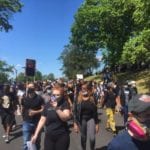
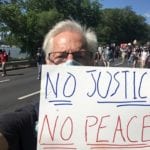

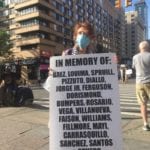
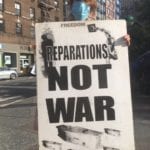
 New! Ask the Members
New! Ask the Members Local Heroes: Plasma Donors Infuse the City with Life
Local Heroes: Plasma Donors Infuse the City with Life About Our Programs
About Our Programs

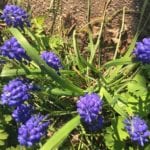
 Sharing and Caring: Bringing Out the Best When So Much is Dark
Sharing and Caring: Bringing Out the Best When So Much is Dark Our Ethical Family
Our Ethical Family